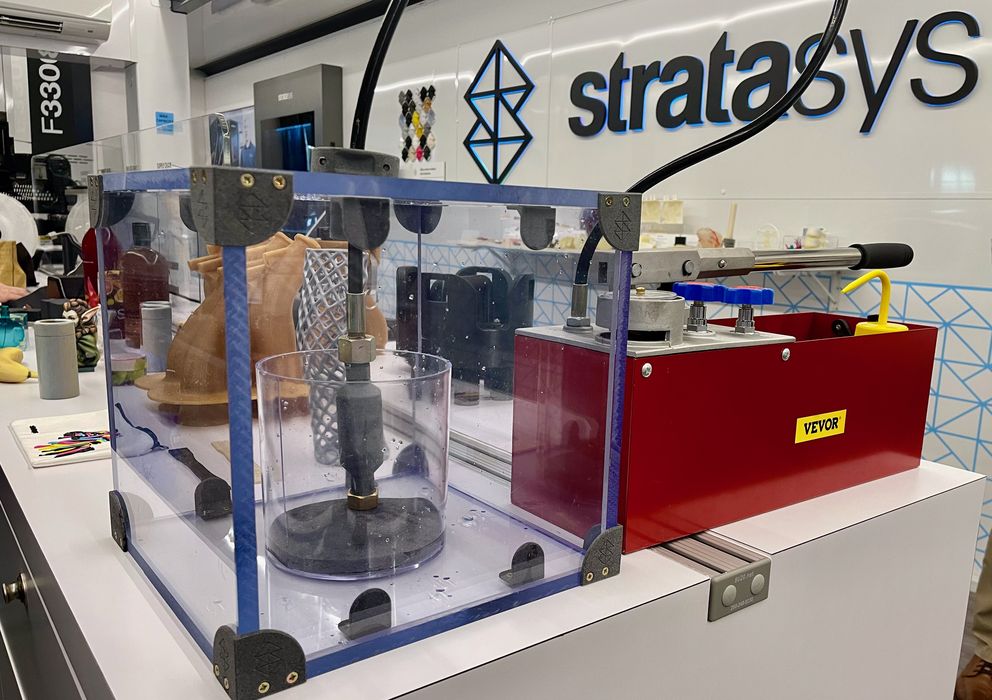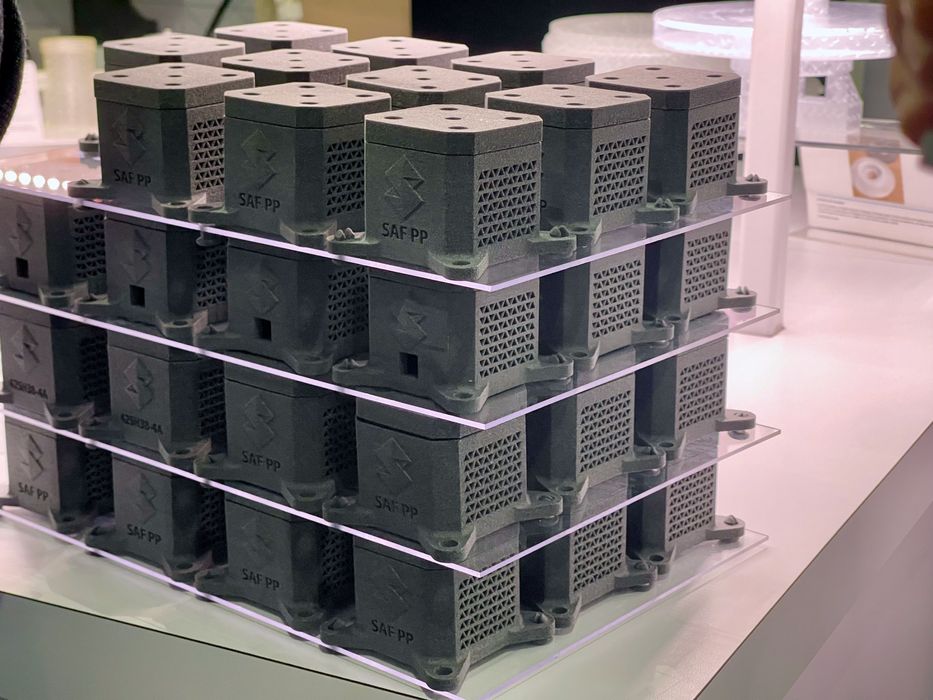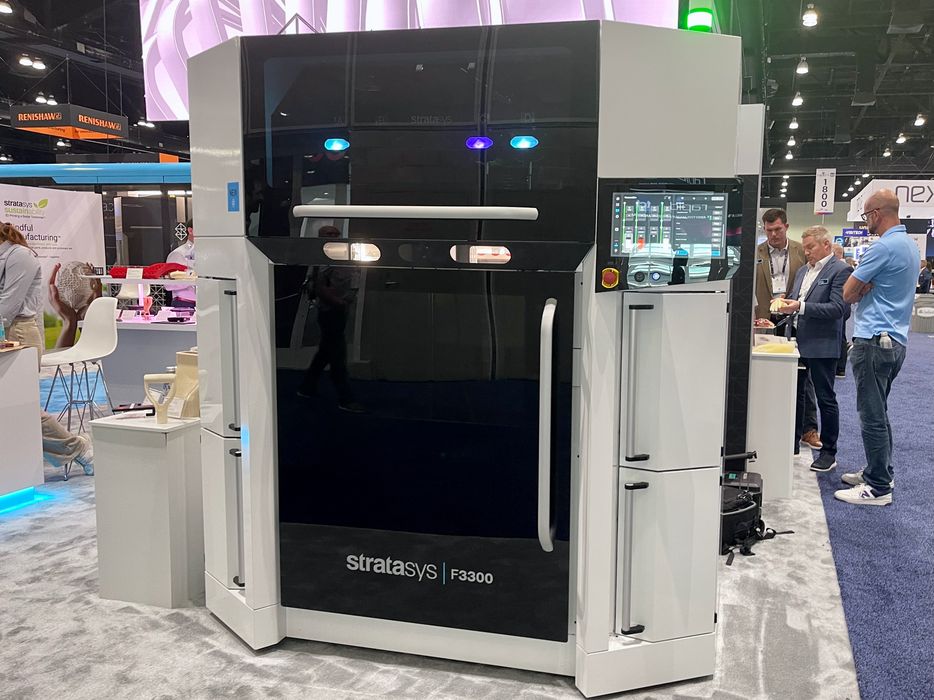
Stratasys has made some interesting materials developments.
The company is gradually boosting their materials catalog to address the needs of more industries, and some of the materials are quite interesting.
One is polypropylene, designed for the SAF manufacturing system. SAF is a very different 3D printing process that involves selectively dropping a special liquid on a powder bed at high resolutions. A heating system then warms up the liquid, which melts the powder. This continues layer by layer until the object is complete.

SAF is unusual in that it is quite compatible with large scale manufacturing: huge numbers of parts can be produced in the build chamber on each job. There is no need for support material, as the powder holds up any overhangs.
Until recently SAF materials were limited to nylons, specifically PA11 and PA12. Recently, however, Stratasys introduced a new and potentially application-opening polypropylene material.
Polypropylene is a very unusual material in that it is quite flexible, and can be food safe. It’s used in a wide variety of applications, and you likely used a polypropylene item today.
Stratasys demonstrated their new PP material in an unusual setup, seen at top. The idea was to prove the strength and solidity of parts printed with SAF PP. The item in the center of the chamber is made from this material, and the test involves putting pressurized water into it.
This is quite a feat, as most 3D prints are quite porous and could never be used for any fluid application. Here Stratasys demonstrated that you can not only count on the part being watertight, but it’s watertight under pressure.
This surely opens up a wide range of fluid applications for 3D printing that otherwise would have been very challenging to address.
Stratasys has also been improving materials for their other 3D print processes, including bio polymers that have enabled surgical planners to print, for example, heart valves. These are made with the PolyJet process, and are able to not only match the colors of the valve, but also its varying hardness throughout the structure. This enables surgeons to practice complex operations on near-real life surrogate parts.

They’ve also added TPU flexible materials for their Origin P3 systems, and hinted that there are additional flexible materials coming for their new flagship FDM device, the F3300.
The wider the range of materials, the more applications can be achieved. The strategy seems to be working for Stratasys, who told us that all but two F1 teams now partner with Stratasys for parts production.
It’s always the materials.
Via Stratasys
